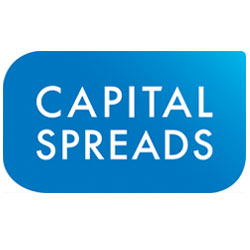Avalanche (AVAX) has secured a strong position in the cryptocurrency market, with a market cap exceeding $10 billion, placing it among the top 15 digital assets. Despite competing with major players like Ethereum, Avalanche has attracted significant institutional support, including over half a billion dollars from Andreessen Horowitz and Polychain Capital.

However, the platform has faced challenges, including a decline in total value locked, raising concerns about its long-term sustainability. Investors should carefully assess Avalanche’s prospects. The following sections will provide a detailed SWOT analysis to evaluate the potential risks and rewards of investing in AVAX.
The Origin Story
Avalanche was created to overcome the limitations of existing blockchains, such as scalability, decentralization, and security. The founders believed that platforms like Bitcoin and Ethereum couldn’t scale effectively for global transactions.
The Avalanche Consensus Protocol
Avalanche introduced a unique consensus protocol that combines the speed and efficiency of classical consensus with the decentralization of Nakamoto consensus. This innovation allows Avalanche to process thousands of transactions per second with near-instant finality. The protocol was first detailed in a 2018 whitepaper by the pseudonymous “Team Rocket” and later developed into a full platform by Ava Labs.
Development and Launch
Emin Gün Sirer and his team at Ava Labs used the Avalanche protocol to create a scalable blockchain platform supporting decentralized applications (dApps) and custom networks. Avalanche’s architecture includes three chains: X-Chain (for asset exchange), P-Chain (for managing validators and subnets), and C-Chain (Ethereum-compatible smart contracts).
Key Milestones
• Mainnet Launch: Avalanche’s mainnet went live on September 21, 2020, enabling support for DeFi, NFTs, and enterprise solutions.
• Growth: Avalanche quickly gained traction, forming partnerships across the blockchain space and expanding its ecosystem.
• Avalanche Rush: In August 2021, a $180 million incentive program, Avalanche Rush, was launched to attract DeFi projects, significantly boosting adoption.
Avalanche’s innovative consensus and focus on scalability have made it a leading blockchain platform, with continuous development by Ava Labs and the community.
Key Fundamental Metrics:
User Activity
Avalanche’s daily active user (DAU) count, currently hovering around 34,000 according to TokenTerminal, lags behind its competitors. Solana’s DAU surpasses 800,000, while Ethereum boasts over 400,000. Moreover, Avalanche has witnessed a concerning 50% decline in DAU over the past year, from approximately 70,000. This metric raises questions about the platform’s ability to retain and attract users.
Network Revenue
Avalanche primarily generates revenue through transaction fees levied on network activity. These fees, generally considered reasonable, are denominated in AVAX and contribute to the platform’s sustainability. TokenTerminal estimates Avalanche’s annual fee revenue at around $8 million.
Market Standing
With a market capitalization exceeding $10 billion, AVAX is a top-15 cryptocurrency. This figure represents a substantial increase from the previous year. However, Avalanche competes primarily with other Layer-1 blockchains like Tron, Cardano, Solana, BNB Chain, and Ethereum, all of which command larger market caps.

Source: create.vista.com
Market Analysis:
Problem and Solution
Avalanche positions itself as a high-throughput, low-latency platform designed to overcome the scalability limitations plaguing many blockchain networks. By leveraging a unique consensus mechanism, Avalanche claims to process thousands of transactions per second without compromising on network performance or incurring exorbitant fees.
Target Market
Avalanche primarily caters to two key segments: developers seeking a robust Layer-1 infrastructure for their decentralized applications (dApps) and end-users who interact with these dApps.
Value Proposition
For developers, Avalanche offers a platform to build scalable and responsive dApps. This translates to enhanced user experiences characterized by swift transaction times and minimal fees. End-users benefit directly from these performance improvements, fostering increased engagement and adoption of dApps on the Avalanche ecosystem.
Competitive Landscape
The Layer-1 landscape is highly competitive, with Ethereum maintaining its dominant position. Avalanche faces the challenge of narrowing the gap between its capabilities and those of the industry leader.
Market Potential
The burgeoning web3 ecosystem presents a substantial growth opportunity for Layer-1 platforms. While Ethereum is likely to retain its stronghold, EVM-compatible networks like Avalanche are well-positioned to capitalize on the increasing demand for scalable and efficient blockchain solutions.
Regulatory Environment
The cryptocurrency industry is subject to evolving regulatory scrutiny. Given its prominence, Ethereum is at the forefront of regulatory attention. Despite being a smaller player, Avalanche’s visibility within the market exposes it to potential regulatory risks.
Investor Takeaway
Avalanche has demonstrated a strong foundation, built upon a capable team and a well-executed six-year roadmap. The project’s substantial backing from institutional investors is a testament to its potential. Moreover, its position as a top-15 cryptocurrency by market capitalization underscores its prominence in the crypto ecosystem.
However, the platform has encountered challenges in maintaining user growth. Despite early momentum, Avalanche has struggled to compete effectively in the crowded Layer-1 space. Its daily active user metrics, significantly trailing competitors like Solana and Ethereum, highlight this area of concern.
Investors should carefully weigh these factors when considering Avalanche. While the project’s fundamentals are solid, its ability to attract and retain users will be crucial for its long-term success.
Learn from market wizards: Books to take your trading to the next level














